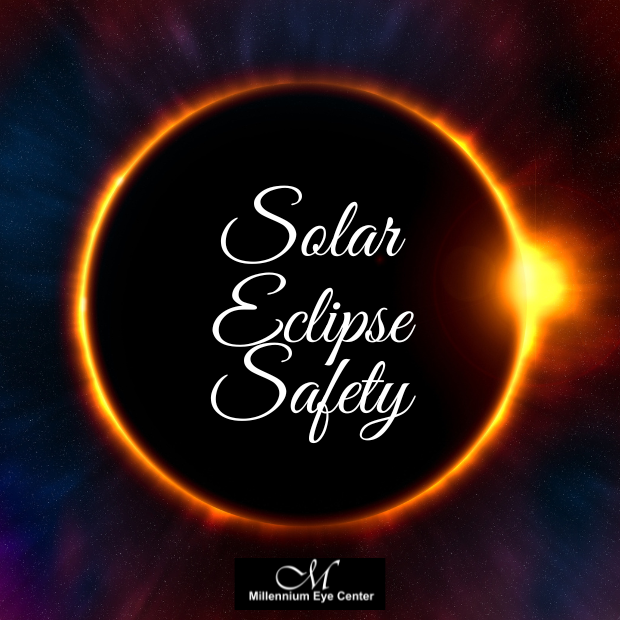This Monday, April 8, millions will turn their eyes to the sky to experience the first solar eclipse since 2017. For those in certain areas of Texas, Oklahoma, Arkansas, Missouri, Illinois, Kentucky, Indiana, Ohio, New York, Vermont, New Hampshire and Maine, the eclipse will be total—but a partial eclipse will be visible throughout the entire continental United States.
Here are some tips to keep your eyes safe while looking at the eclipse.
- Do not look directly at the sun or the sun’s rays during the eclipse without proper eye protection.
- Only special-purpose solar filter sunglasses will protect your eyes. These glasses should be up to international safety standards and labeled as “ISO 12312-2” compliant. A pinhole camera is also safe to use to view the eclipse.
- Do not use binoculars or special lenses that magnify the eclipse.
- If you record the eclipse on your phone, do not look at the screen while it’s recording and watch the video later.
- It is recommended to check the fit of solar eclipse glasses to ensure they are completely covering the face. Most glasses will be one size-fits all, which may leave gaps when worn by children. If solar eclipse glasses are unavailable, then welders’ glasses and mylar filters are a safe substitute.
Photographing the Eclipse
If you are attempting to photograph the eclipse, Prevent Blindness offers these helpful tips. They stress that even though you don’t have to be a professional to take pictures of the eclipse, it is recommended to take the same precautions as the experts.
- Never look at the sun through the optical viewfinder of a mirrored SLR camera.
- Don’t point your camera at the sun without a solar filter over the lens.
- Use a solar filter over your phone’s camera.
- Use a remote camera or timer.
In anticipation of the solar eclipse, Prevent Blindness embarked on a comprehensive education program for eyecare providers and their patients. The organization warned that even with solar eclipse glasses, it is important to take additional steps to prevent eye damage. This includes wearing eclipse glasses throughout the entire eclipse, even while photographing the event, to avoid accidentally viewing it with uncovered eyes.
More safety tips about photographing the solar eclipse can be found on the Prevent Blindness website.
Counterfeit Glasses
In recent weeks, the American Astronomical Society (AAS) has sounded the alarm over a wave of counterfeit and fake eclipse glasses entering the U.S. market. According to AAS, counterfeit solar viewers are made by one manufacturer but fraudulently printed with the name of a different manufacturer and their logo or artwork; these may or may not comply with safety standards. Other viewers are not just counterfeit, they are also fake in that they are sold as eclipse glasses but are not safe for solar viewing.
“Filters that provide safe, comfortable views of the sun generally transmit between 1 part in 100,000 (0.001 percent) and 1 part in 2,000,000 (0.00005 percent) of its visible light,” said Rick Fienberg, project manager of the AAS Solar Eclipse Task Force. “Solar filters are at least 1,000 times darker than even the darkest regular sunglasses.”
Fienberg recommends only purchasing glasses from a vetted vendor. He warned that there is no way to be sure if a pair of glasses is 100 percent authentic, adding you shouldn’t be able to see anything through them, except for very bright lights, which should appear very faint through the glasses.
“Staring at a partial solar eclipse for more than a few seconds at a time, even through perfectly safe solar viewers, isn’t much fun anyway,” said Fienberg. “It’s almost impossible to detect the moon’s motion across the sun in real time except with magnification, and you must never look through magnifying optics while wearing eclipse glasses.”
For tips on how to spot fake or unsafe eclipse glasses, click here.

